Reverse osmosis water dramatically improves your soap quality by removing calcium and magnesium ions that interfere with lathering. Without these minerals, your soap creates richer, more stable foam while using 30-50% less product. You'll notice a cleaner rinse with no soap scum residue, consistent performance, and enhanced cleaning efficiency. For soap makers, this means purer formulations and better customer satisfaction. The science behind this transformation reveals why professional soap artisans insist on purified water.
The Science Behind Mineral-Free Water and Soap Chemistry
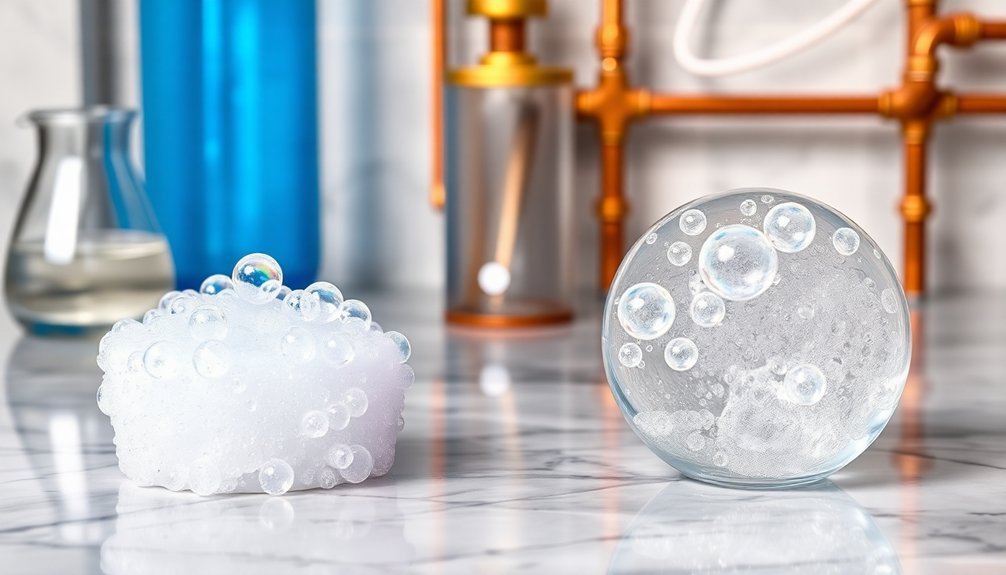
When you combine soap with water, a complex chemical dance begins that dramatically affects cleaning performance.
At the molecular level, soap molecules have a dual nature with hydrophilic and hydrophobic ends that work together to trap dirt and create lather.
RO water enhances this process by eliminating calcium and magnesium ions that typically interfere with soap chemistry.
In hard water, these minerals bind with soap molecules to form insoluble compounds—commonly known as soap scum—reducing effectiveness and wasting product.
How RO Filtration Improves Lather Quality and Consistency
Why does soap perform remarkably better with reverse osmosis water? The answer lies in mineral content. When your soap interacts with RO water, it creates richer lather without the interference of calcium and magnesium ions found in hard water. You'll notice immediate improvements in how your soap performs.
| Factor | Hard Water | Reverse Osmosis Water |
|---|---|---|
| Lather | Limited, weak | Abundant, rich |
| Soap Usage | High quantity needed | Less soap required |
| Residue | Soap scum formation | Clean, clear rinse |
| Consistency | Variable results | Predictable performance |
The seven-stage filtration process in systems like the Apec Water RO-PH90 guarantees ideal soap quality by removing impurities while maintaining balanced mineralization. You'll enjoy better cleaning efficiency and save money as your soap products last considerably longer with RO water.
Comparing Soap Performance: RO Water vs. Hard Tap Water
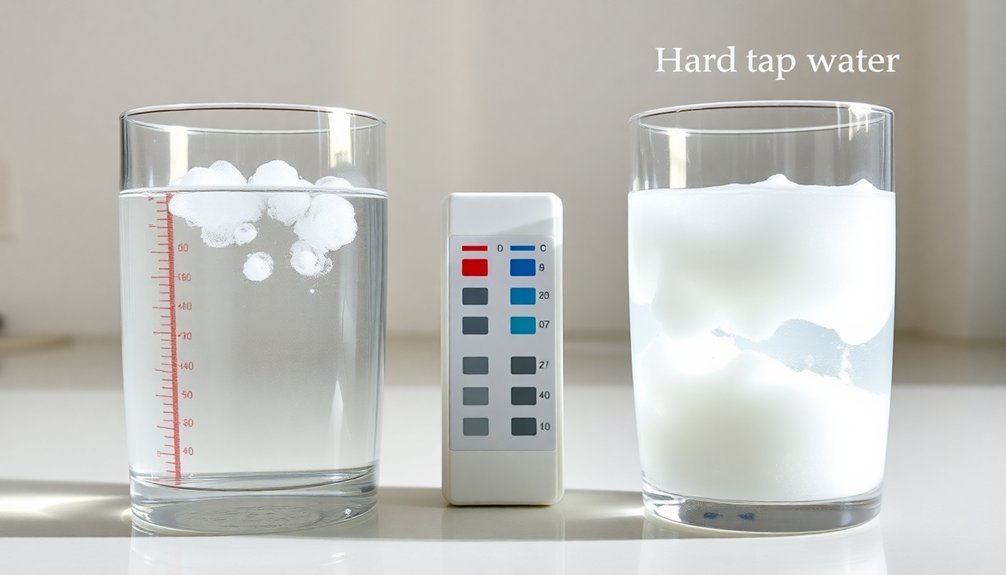
You'll notice a striking difference in lather quality when using soap with RO water versus hard tap water, as the absence of minerals allows for richer, creamier foam that feels more luxurious on your skin.
Your shaving routine will be transformed by RO water's ability to create abundant lather with less product, reducing irritation and providing smoother razor glide.
The enhanced performance isn't just noticeable in bar soaps but extends to shaving creams and gels, where RO water's mineral-free composition creates consistent, stable lather that won't dissipate quickly during your shave.
Lather Quality Differences
The difference between lathering soap in reverse osmosis water versus hard tap water becomes immediately apparent from the first splash.
When you use RO water, you'll notice your soap creates a richer, more stable lather that feels luxurious against your skin. This happens because RO water lacks the calcium and magnesium minerals that typically inhibit soap's natural lathering abilities.
Hard water creates three distinct challenges for ideal lather quality:
- It forms soap scum that diminishes lathering effectiveness.
- It requires you to use considerably more product to achieve decent results.
- It produces inconsistent lathering performance from day to day.
You'll likely experience reduced soap consumption and enhanced shaving comfort after switching to RO water, as its purity allows soaps to perform as they were designed to.
Shaving Experience Transformed
For traditionalists who've spent years adjusting their shaving technique to accommodate hard tap water, switching to RO water often proves revelatory. You'll immediately notice your shaving soap producing a richer, more stable lather with markedly less product.
| Aspect | RO Water | Hard Water |
|---|---|---|
| Lather Quality | Rich, abundant | Thin, unstable |
| Soap Usage | 30-50% less needed | More product required |
| Razor Glide | Smooth, consistent | Variable, draggy |
| Post-Shave Feel | Clean, residue-free | Mineral buildup, sticky |
The transformation extends beyond just aesthetics—your razor glides more smoothly across your skin when minerals aren't interfering with the soap's performance. Over time, you'll save money on shaving products while enjoying a consistently superior shaving experience that's free from the frustrating limitations hard water imposes.
Setting Up an Affordable RO System for Soap Making
While maintaining a consistent soap recipe is essential, investing in purified water through reverse osmosis can dramatically improve your product quality without breaking the bank.
You'll find compact point-of-use RO systems ranging from $200-$500 that easily fit under your sink or in your soap-making workspace. These systems typically include 3-5 filtration stages that remove the impurities that can negatively affect your soap when using tap water.
- Choose a system with sufficient output capacity (50-90 gallons daily) to meet your production needs.
- Plan for regular maintenance with filter replacements every 6-12 months to guarantee continued water quality.
- Consider starting with store-bought RO water (around $0.25/gallon) to test results before investing in your own system.
Common Soap Making Issues Solved by Reverse Osmosis
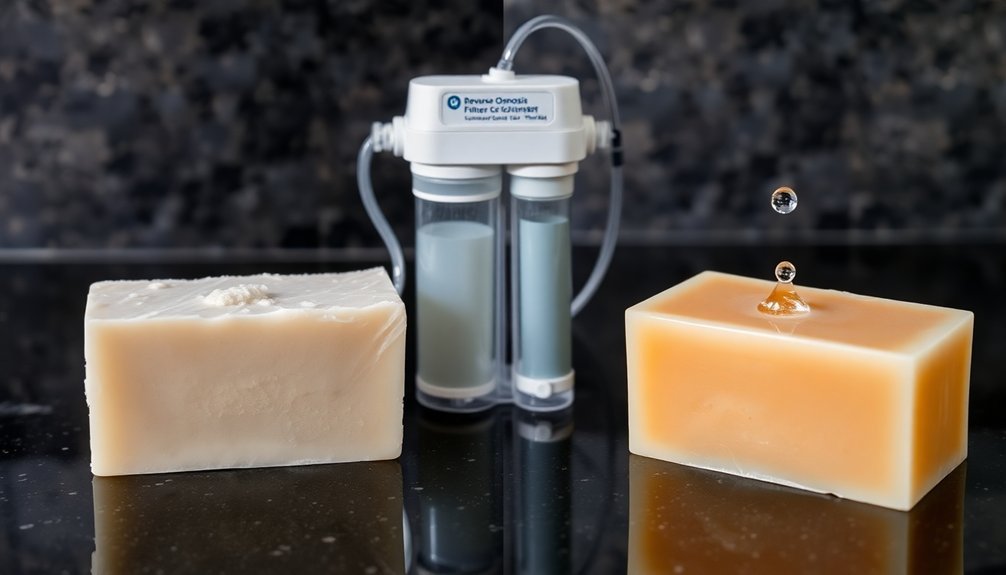
Why do experienced soap makers consistently choose reverse osmosis water?
They've discovered that RO water eliminates common problems that plague soap production. When you use regular tap water, you're introducing minerals and impurities that interfere with saponification, causing inconsistent results.
With reverse osmosis, you'll avoid cloudy soap, poor lathering, and scum formation that often frustrate beginners.
The absence of ions in RO water creates predictable quality in every batch, eliminating the frustrating variability of municipal water sources. Your soaps will maintain proper texture and clarity without the risk of unwanted chemical reactions.
Most importantly, you'll achieve superior lathering capabilities and cleaning power in your finished products.
The Environmental Impact of Using RO Water in Soap Production
When you choose reverse osmosis water for soap making, you're making a significant positive impact on the environment beyond just creating better soap.
RO water enhances saponification efficiency, resulting in less energy consumption and waste during soap production.
The environmental benefits extend throughout the soap's lifecycle:
- Fewer chemical additives are needed when using pure RO water, reducing the chemical footprint of your soap production process.
- Soaps made with RO water create less soap scum, meaning you'll use fewer cleaning products and less water for maintenance.
- Cleaner formulations create more biodegradable soaps, decreasing harmful runoff into waterways and protecting local ecosystems.
These advantages make RO water an environmentally responsible choice that benefits both your soap quality and our planet.
RO Water Storage and Handling Tips for Optimal Soap Results
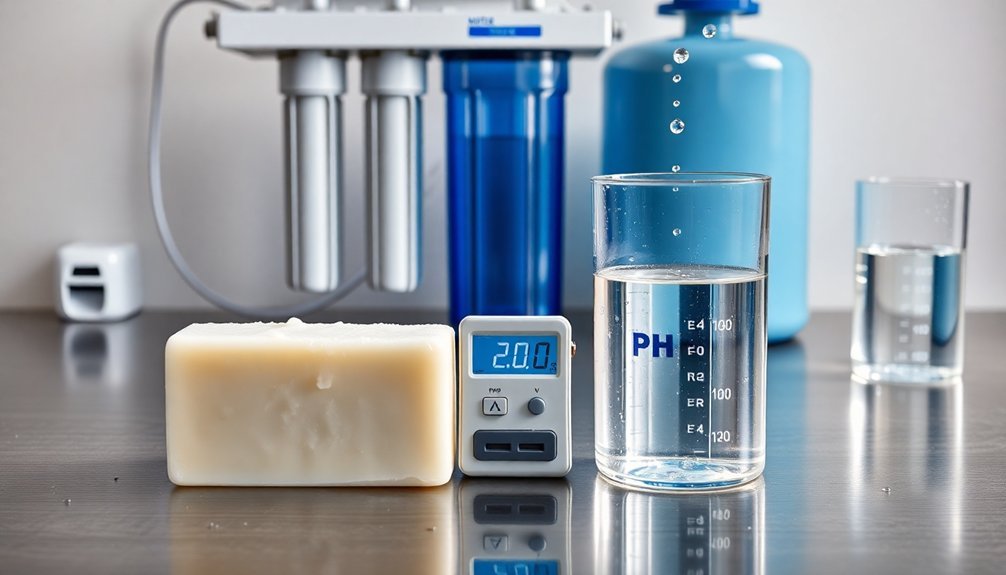
After investing in reverse osmosis filtration for your soap making, proper storage and handling of your RO water becomes essential to maintain its purity and effectiveness.
Store your RO water in clean, airtight containers to prevent contamination that could compromise your soap quality. Opt for opaque containers and keep them in a cool, dark place to inhibit bacteria and algae growth while extending shelf life.
Always check container seals before use to verify no contaminants have entered your water supply.
Establish a regular sanitization schedule for all storage vessels to eliminate potential impurities that might affect your final product.
Frequently Asked Questions
Can You Use Reverse Osmosis Water for Soap Making?
Yes, you can use reverse osmosis water for soap making. It's actually ideal because it's free from minerals and impurities that might interfere with saponification, giving you better lather and more consistent, high-quality soap.
Does Reverse Osmosis Remove Soap?
No, reverse osmosis doesn't remove soap from water. Instead, it removes minerals that interfere with soap's effectiveness. You'll notice better lathering and cleaning when using soap with RO water since hardness minerals are eliminated.
What Is the Downside of Reverse Osmosis?
Reverse osmosis can lower your water pressure, requires high initial investment, needs regular filter replacements, produces less mineral-rich water, demands maintenance, and wastes water—using four gallons of tap water to produce one gallon of filtered water.
Is Bathing With RO Water Safe?
Yes, bathing with RO water is safe. You'll enjoy cleaner, chemical-free water that's gentle on your skin and hair. It's especially beneficial if you have sensitive skin or allergies to water contaminants.
In Summary
You've discovered how reverse osmosis transforms your soapmaking process by eliminating minerals that interfere with saponification. With RO water, you'll enjoy consistent batches, improved lather, and longer-lasting bars. Whether you're a hobbyist or professional soapmaker, investing in an RO system pays dividends in quality. Remember to store your filtered water properly, and you'll continue to create superior products while potentially reducing your environmental footprint.

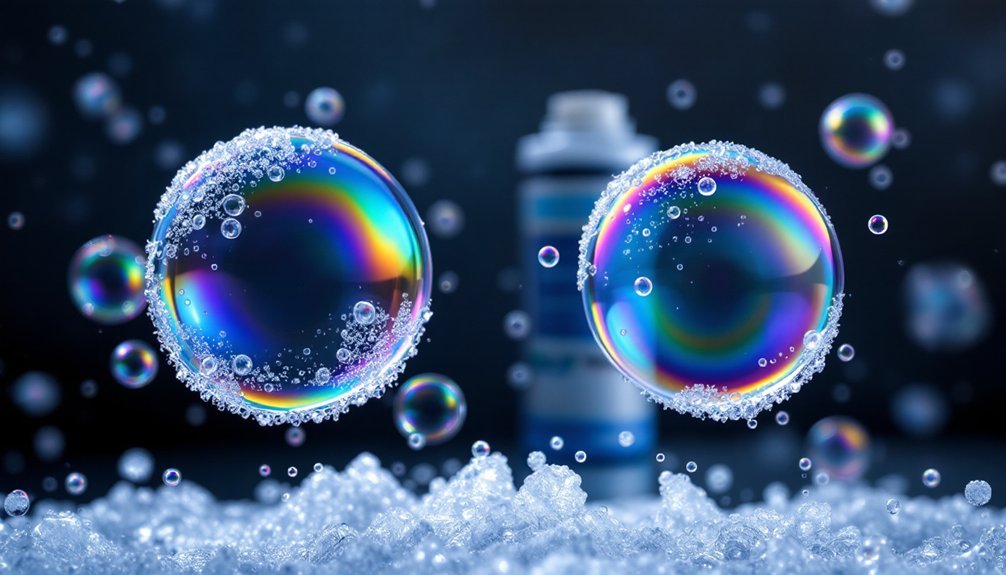



Leave a Reply